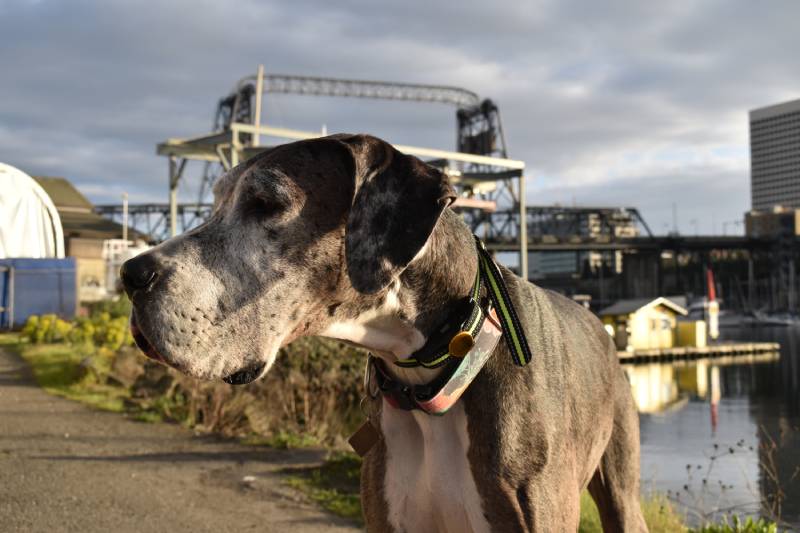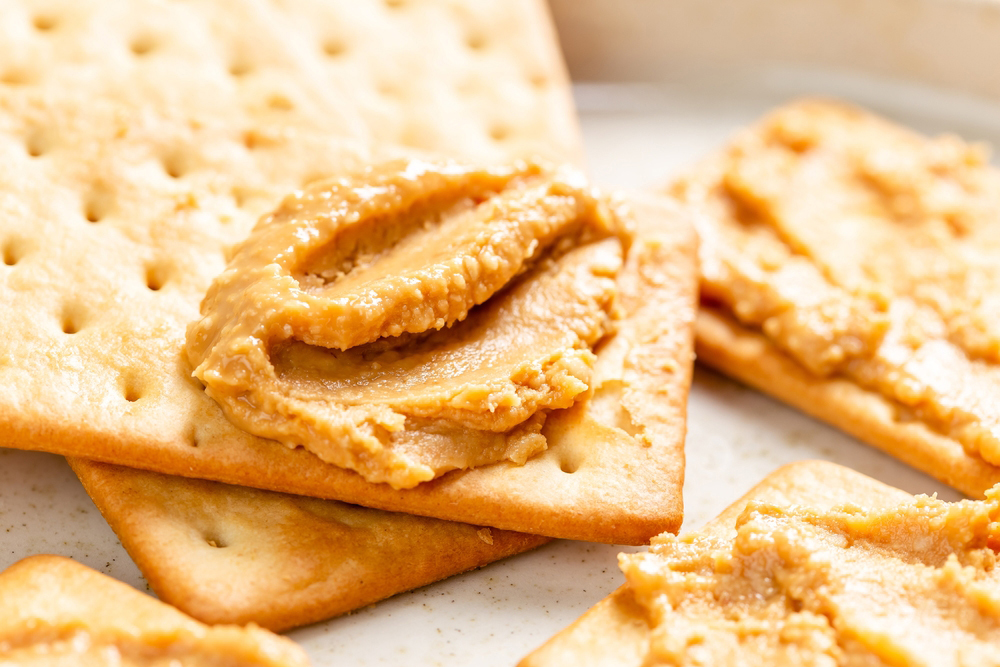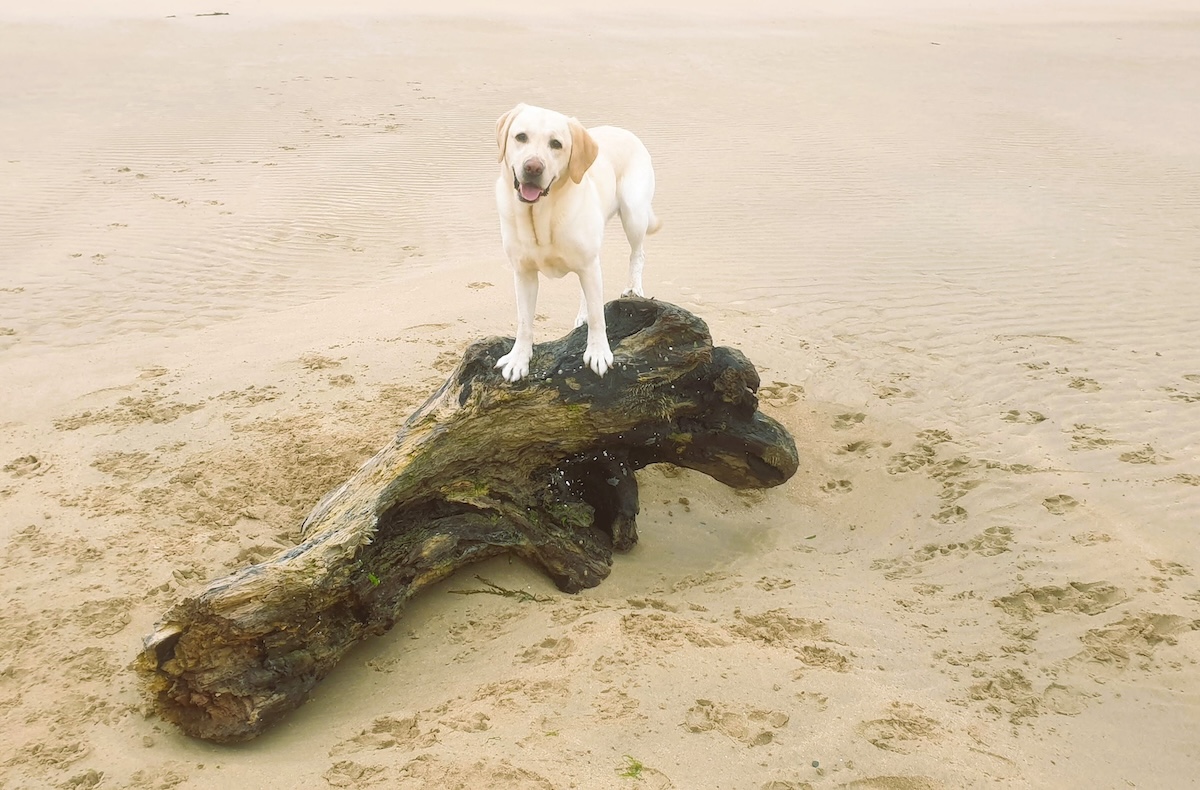Click to Skip Ahead
The Mantle Merle is a particular type of Great Dane with a Merle coat color and a mantle. A mantle is an area of solid white that appears around the neck and chest only. A merle coat color pattern is a pale to dark grey base broken up with black patches. Merle Great Danes are pretty rare, to begin with, so this dog is extremely rare.
Breed Overview
Height:
28–40 inches
Weight:
99–130 pounds
Lifespan:
7–10 years
Colors:
Pale gray to dark gray with merle patches
Suitable for:
Families with plenty of space (and time)
Temperament:
Gentle, affectionate, loyal
This coat variation is recognized by the AKC, however, it is difficult to find puppies. You’ll likely need to find a breeder specializing in merle dogs and then find out if they have mantle dogs, too.
The Merle gene is responsible for the grey base coat and can also cause some health issues, such as deafness, eye defects, and skin problems, which is important to be aware of if you’re thinking of bringing one of these dogs home.
Mantle Merle Great Dane Breed Characteristics
The Earliest Records of the Mantle Merle Great Dane in History
The Mantle Merle Great Dane isn’t a special breed. Instead, it is simply a color variant of the Great Dane. Therefore, these dogs share a history with the Great Dane as a whole.
The Great Dane was developed from mastiff-type dogs that were used for hunting wild boars and guarding estates. The breed was refined by adding Greyhound blood, which gave them a more graceful and elegant appearance. The Great Dane was named the national dog of Germany in 1876 and was called the Deutsche Dogge, or German Dog. Despite their modern name, they aren’t actually Danish.
Great Danes were phased out from hunting when the gun was invented. They were no longer required to hold the big game in place while their owners hunted them. However, they were already well-loved by nobility and quickly became companion animals for those with means.
How the Mantle Merle Great Dane Gained Popularity
This color still isn’t extremely popular today. Many people like the look of the merle coloration, and the mantle pattern just makes the dog look even more special. However, the merle coloration can cause health problems for the dog. (These health problems aren’t exactly rare either.) Therefore, the moral implications of breeding these dogs are questionable.
For this reason, it is likely that these dogs won’t ever be very popular. When dogs are more likely to have health problems, they’re also less likely to be bred.
Formal Recognition of the Mantle Merle Great Dane
The American Kennel Club (AKC) officially recognized the Great Dane in 1887, and the Great Dane Club of America was formed in 1889. The AKC considered the merle to be one of the seven standard coat colors of the Great Dane.
The AKC describes the mantle merle Great Dane as having a pale gray to dark gray merle base color with black torn patches within. They may or may not have a mantle, which is an area of solid white color that rings the neck and chest only. They also have a black head with a white muzzle, a white chest, white forelegs and hind legs (whole or partially), and a white-tipped black tail.
These dogs are allowed to compete in conformation shows, assuming they don’t have any other disqualifying factors.
The first Merle Great Dane to earn a conformation champion title was Bellini, bred and owned by Dr. Tracy Powell of Dulce Great Danes in East Windsor, Connecticut, in 2019.
Top 5 Unique Facts About the Mantle Merle Great Dane
1. This coloration is only one of seven that are recognized by the American Kennel Club.
It is one of the rarest colorations, as it isn’t often the focus of many breeders.
2. It’s often produced by mixing a merle and mantle Great Dane together.
The mantle and harlequin Great Danes are seen as having two separate patterns. However, the merle mantle Great Dane is created by mixing them together. Because these dogs are so rare, there often aren’t two breeding canines available to any one particular breeder, so mixing is required.
3. The Merle gene causes a range of health effects.
These dogs aren’t very healthy for this reason. Deafness, blindness, and skin problems are relatively common.
4. The Merle gene is dominant.
Dogs only need one copy of the gene to have the merle coat color as it is a dominant gene. Dogs that inherit two copies of the gene are almost guaranteed to have health problems. Therefore, merle dogs are usually only bred with non-merle dogs.
5. Merle dogs have won conformation champion titles.
However, it is rare, as merle dogs are rare themselves.
Does a Mantle Merle Great Dane Make a Good Pet?
These dogs can make great pets for the right owner. They are very friendly towards just about anyone, including other animals. Aggression is rare in the breed. The mantle merle Great Dane has a beautiful coat color that really stands out from the crowd, which is one reason they are sought after.
Plus, this coloration is recognized by the AKC so unlike other rare colorations, these dogs are more likely to be bred by professional breeders.
However, these dogs are prone to many health issues. There are several health problems caused by their larger size that all Great Danes are prone to. But they are affected by even more health problems due to their merle coloration. Because of this, they also have a shorter lifespan than most dogs.
They’re also very big dogs. They need a lot of space and exercise to keep them happy—they aren’t particularly good for apartments. They can also be expensive to feed, groom, and care for due to their huge size.
Final Thoughts
The Mantle Merle Great Dane is a beautiful dog with a unique coat. However, they are prone to many health problems due to their larger size and the merle gene.
However, they do act like other Great Danes, meaning they’re friendly and affectionate. They’re often considered very good family dogs, as they get along with just about anyone.
Featured Image Credit: Paige Racioppo, Shutterstock










